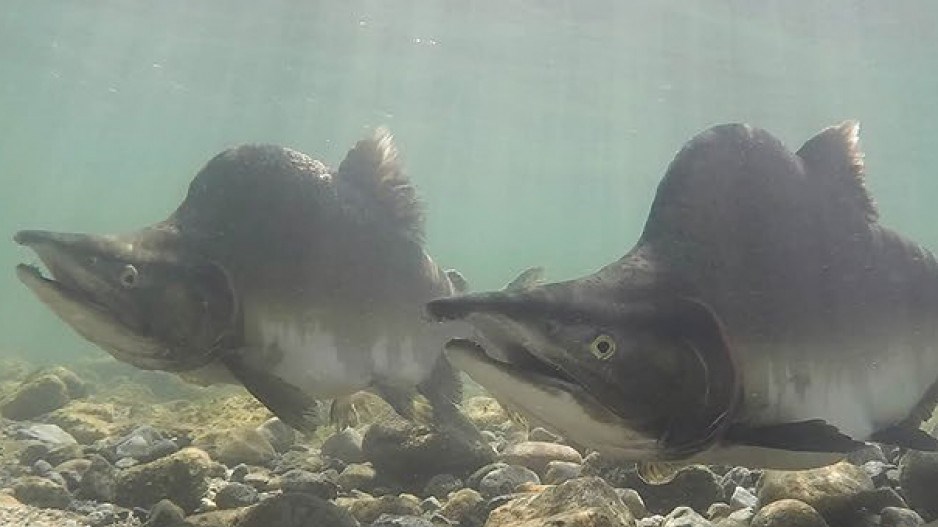Global warming is almost certainly the cause of declines in Pacific salmon in Canada, a report released today by Fisheries and Oceans Canada concludes.
The report, released Aug. 22, comes in the midst of what is shaping up to be what could be the worst year on record for Fraser River sockeye returns.
The pre-season median forecast was for 4.8 million Fraser River sockeye. The current estimate is 628,000. At those levels, there will be complete closures for Fraser River sockeye for the commercial, sport and First Nations sectors. There may be opportunities to fish for pink salmon, however.
As for chinook, estimated returns for Canada is 25,000, which is about 5,000 short of the mean of 30,000. Some limited recreational fisheries for chinook remain open.
DFO officials in a technical briefing noted that the last five years have been the warmest on record, globally, and has been particularly pronounced in the northern hemisphere.
“There is no question that climate change is having a significant impact on our salmon,” said Fisheries and Oceans Minister Jonathan Wilkinson.
The report notes that an unusually warm patch of water in the Pacific Ocean — called the “blob” — that persisted from 2013 to 2017 also coincided with a strong El Nino event in 2015, leading to the warmest temperatures for the Northern Pacific Ocean on record.
Warmer than usual ocean temperatures almost certainly had a negative impact on salmon and the whole food web.
During this warming period, northern zooplankton, which are much larger than southern zooplankton, were found to be the same small size as their southern cousins. Salmon are not only returning in lower abundance, they are often smaller and produce fewer eggs per female.
Declines have generally been more pronounced in southern range salmon (Fraser River) than more northern systems, like the Nass and Skeena Rivers, although those systems have recently also begun to experience lower returns.
The appearance of more exotic species of fish typically found in Mexico have also been found in B.C. waters in recent years — a strong indicator of localized ocean warming.
Climate change is also blamed for warmer water, flooding and drought impacting the freshwater environment was well.
It is notable that pink and chum salmon populations have been generally healthier than sockeye, coho and chinook salmon have.
Both pink and chum are marked by the fact that they migrate to the ocean soon after they hatch, whereas other salmon species spend up to two years in fresh water before migrating to sea.
While it is hard to argue with the conclusion that warming ocean temperatures are the primary cause of declining salmon stocks along the B.C. coast, the State of Canadian Pacific Salmon report appears to be rather parochial in its focus.
Canadian salmon don’t respect borders — they share an ocean with Russian, Japanese and Alaskan salmon. Yet the report appears to ignore what has been happening in other regions, although DFO officials did note that sockeye returns for Washington Lake in the U.S. are extremely low.
According to a study last year by Greg Ruggerone and James Irvine, Pacific salmon are more abundant than they have ever been. The problem is that abundance is mainly pink and chum salmon — both of which are augmented by commercial hatcheries in Alaska and Russia.
An estimated 5 billion hatchery fish are introduced in the Pacific Ocean each year from hatcheries in Japan, Russia and Alaska.
The report appears not to consider the impact of this abundance — and the impact of commercial hatcheries — on the Pacific Ocean’s overall carrying capacity.
Coinciding with the release of the State of Salmon report, Wilkinson was in Vancouver today announcing a number of funding programs under the British Columbia Salmon Restoration and Innovation Fund. Five research and restoration projects will receive $2.7 million.
One of those projects is a "pan-Pacific" ocean survey to assess salmon abundance and health in the northern Pacific. Last winter, the first winter survey was done, spearheaded by retired DFO fisheries scientist Dick Beamish.
Funding announced Thursday includes more such ocean surveys, to take place in the winter and the summer of 2021. Another project will use technology to create heat maps that will identify species of concern, like chinook, in order to minimize commercial fishing bycatch.
Federal and provincial measures aimed at addressing declining salmon populations have been focused largely on salmon habitat protection and restoration. However, the State of Salmon report suggests those measures may have minimal impact.
“Currently, salmon recovery, habitat restoration and fisheries management actions operate under the assumption that future salmon production will function similarly to how it has in the past,” the report states.
“However, under rapidly changing climate conditions this assumption is no longer valid. Changing climate means that conditions are increasingly falling outside the bounds of historical observations. This can alter the effectiveness of activities currently relied upon to manage salmon and their ecosystems, and ultimately puts salmon populations at risk.”
@nbennett_biv



